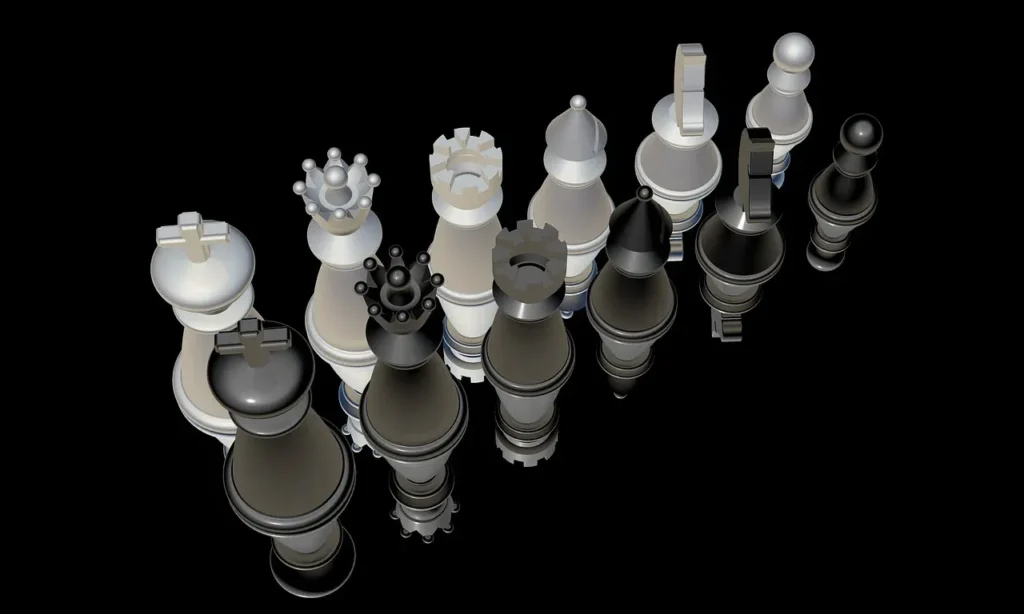How to Play Chess: The Complete Guide for Beginners
Introduction
Chess is a timeless strategy game that has captivated minds for centuries. Played on a checkered board with unique pieces, chess challenges players to think ahead, outmaneuver their opponent, and develop critical problem-solving skills. Whether you’re brand new or seeking to refresh your basics, this comprehensive guide will walk you through how to play chess—from setup and movement to winning strategies.

Understanding the Chessboard
Chess is played on a square board divided into 64 squares (8 rows and 8 columns). The squares alternate between light and dark colors, and each player starts with an army of 16 pieces arranged on their side of the board.
Board layout essentials:
- The bottom right square should be a light-colored square.
- Each player begins with their pieces on the first two rows nearest to them.
Meet the Chess Pieces
There are six types of pieces, each moving in a distinct way:
- King: Moves one square in any direction (horizontal, vertical, diagonal). The most important piece to protect.
- Queen: Moves any number of squares in any direction. The most powerful piece.
- Rook: Moves any number of squares horizontally or vertically.
- Bishop: Moves any number of squares diagonally.
- Knight: Moves in an “L” shape—two squares in one direction, then one square perpendicular. Knights can jump over other pieces.
- Pawn: Moves forward one square but captures diagonally. On its first move, a pawn may move forward two squares.
Chess Starting Position
How to set up the board:
- Second row: Place all eight pawns.
- First row:
- Rooks in the corners.
- Knights beside rooks.
- Bishops beside knights.
- Queen goes on her own matching color (white queen on white square, black queen on black square).
- King occupies the remaining square.
How the Pieces Move
- Pawns move forward, capture diagonally, and can be promoted to any piece (except king) upon reaching the opposite end.
- Rooks, Bishops, Queen can’t jump over other pieces.
- Knights jump over all pieces.
- King can perform a special move called “castling” with a rook, moving two squares toward the rook as the rook moves to the square next to the king. Conditions apply.
Making Your First Moves
Players take turns moving one piece at a time. White always moves first.
Basic moves to try as a beginner:
- Open with pawns, freeing your bishops and queen.
- Develop knights and bishops toward the center of the board.
- Keep your king safe, often by castling.
How to Win Chess
The goal is to checkmate your opponent’s king—a position where the king is in danger and cannot escape.
Checkmate ends the game immediately.
Other ways a chess game ends:
- Stalemate: The player cannot make a legal move and isn’t in check. This is a draw.
- Resignation: A player concedes defeat.
- Draw: By agreement, repetition, or insufficient material.
Chess Strategies and Tips
- Control the center: Place pieces where they can influence the heart of the board.
- Develop all your pieces: Don’t rely on just one or two powerful pieces.
- Think ahead: Always look for threats, checks, and possible captures.
- Protect your king: Don’t leave your king exposed; use castling for safety.
- Watch for tactics like forks (attacking two pieces at once), pins (a piece cannot move without exposing a more valuable piece), and skewers (a valuable piece is moved, exposing a less valuable piece).
Learning Through Practice
Chess improvement comes through practice! Try these ways to play and learn:
- Play online against human or computer opponents.
- Solve chess puzzles to sharpen your tactics.
- Study famous games and openings.
- Join chess clubs or online communities for tips and support.
Conclusion
Chess is more than just a game—it’s a journey of mental challenge and growth. With these basics, you can set up the board, move the pieces, and start developing strategies. Enjoy the satisfaction of learning, practicing, and experiencing the thrill of this classic game. Whether you’re seeking competition or recreation, chess offers endless opportunities to test your mind and have fun. Start your chess adventure today!
FAQ: How to Play Chess
Q1: What is the main objective in chess?
A: The main objective is to checkmate your opponent’s king, which means the king is under direct attack and cannot escape capture.
Q2: How many pieces does each player have in chess?
A: Each player starts with 16 pieces: 1 king, 1 queen, 2 rooks, 2 bishops, 2 knights, and 8 pawns.
Q3: Who makes the first move in chess?
A: White always moves first in chess.
Q4: How does a pawn move and capture?
A: Pawns move forward one square (or two squares on their first move) and capture diagonally one square.
Q5: What is castling in chess?
A: Castling is a special move involving the king and a rook. It helps protect the king and brings the rook into play. Certain conditions must be met to castle.
**Q6: Can a pawn become another piece?
A: Yes, if a pawn reaches the opposite side of the board, it can be promoted to any piece except the king.
Q7: What happens if a king cannot move but is not in check?
A: That’s called stalemate; the game ends in a draw.
Q8: Are there tips for beginners to improve at chess?
A: Yes! Focus on controlling the center, developing all your pieces early, protecting your king, and practicing regularly.
Q9: Can I play chess online as a beginner?
A: Absolutely. There are many online platforms where you can play against humans or computers and access learning resources.
Q10: Where can I find chess puzzles or training tools?
A: Many chess websites and apps offer free puzzles, tutorials, and guides to sharpen your skills and learn more strategies




